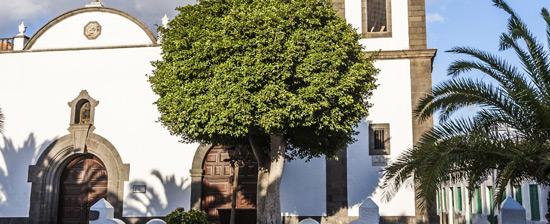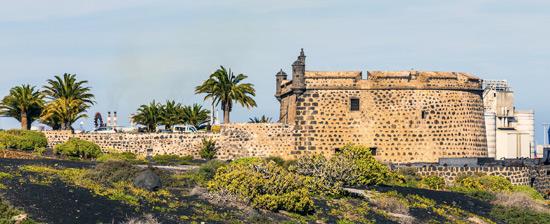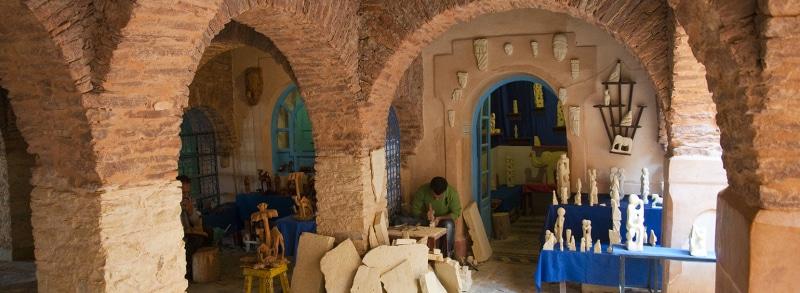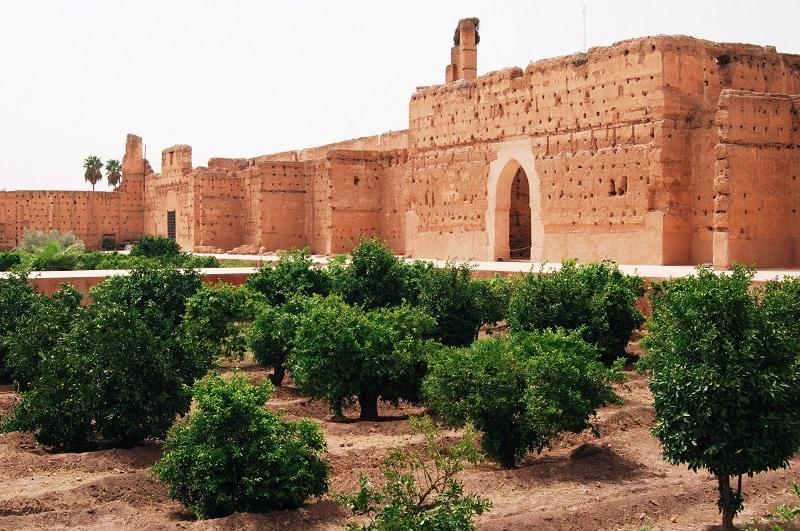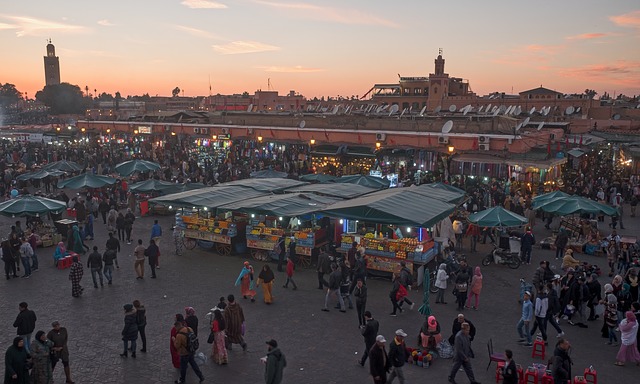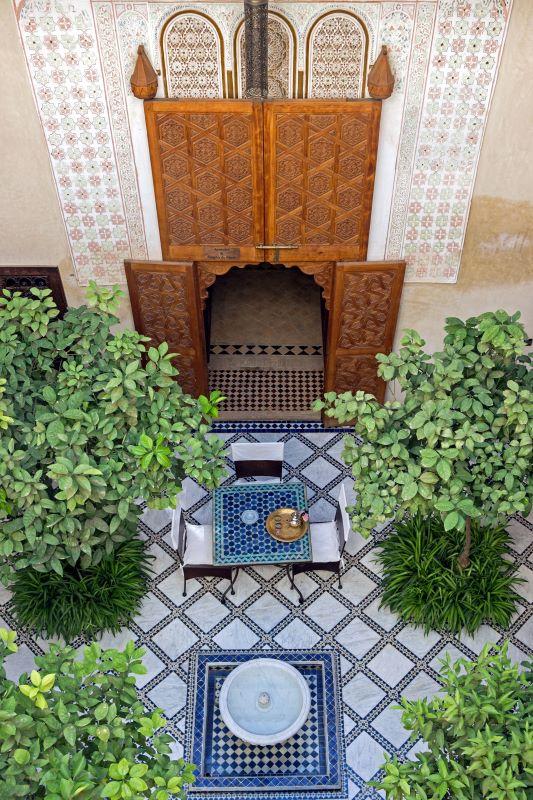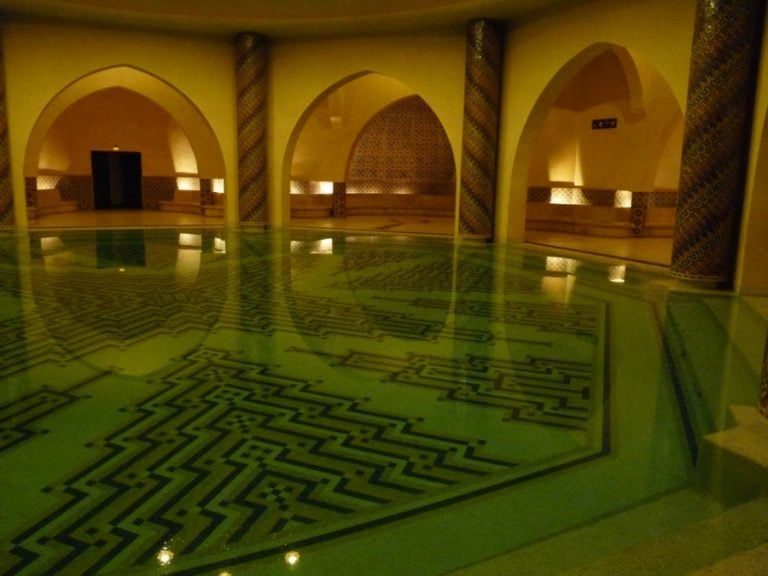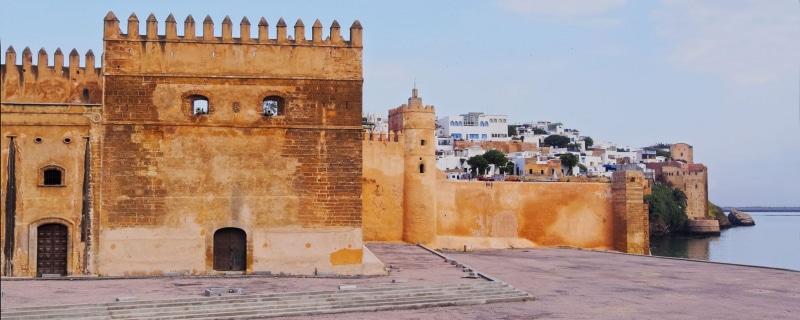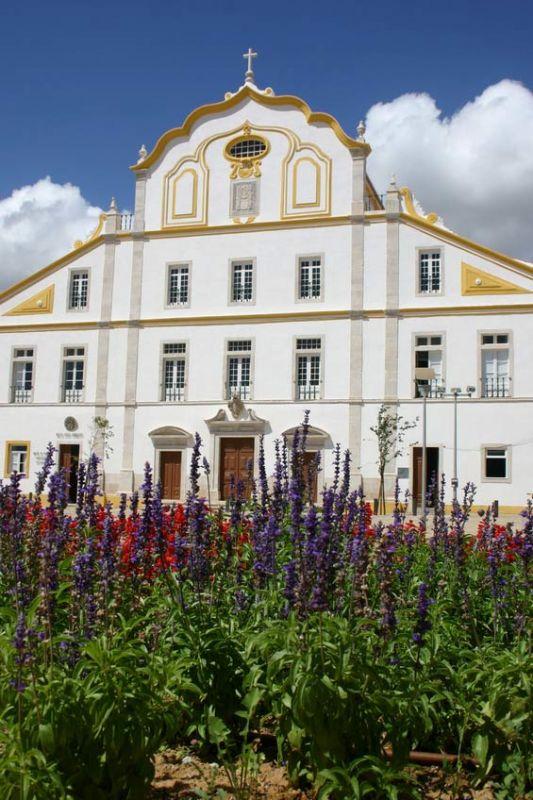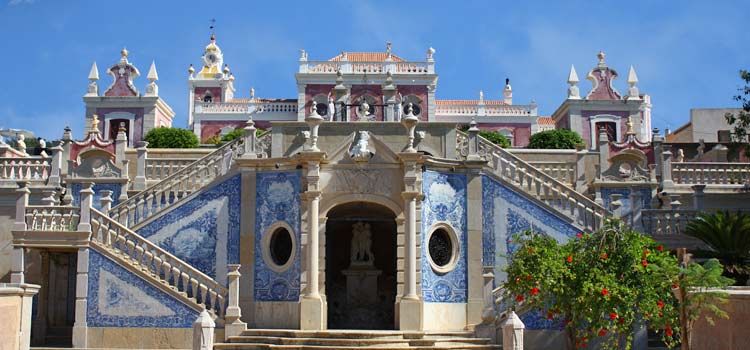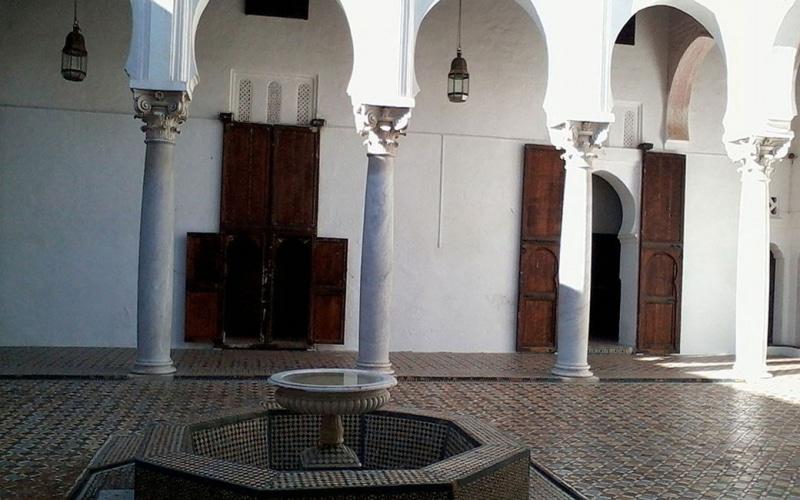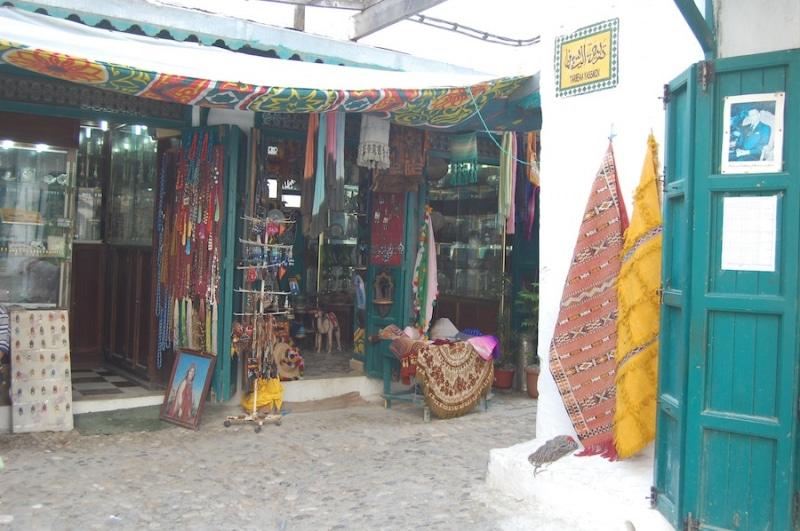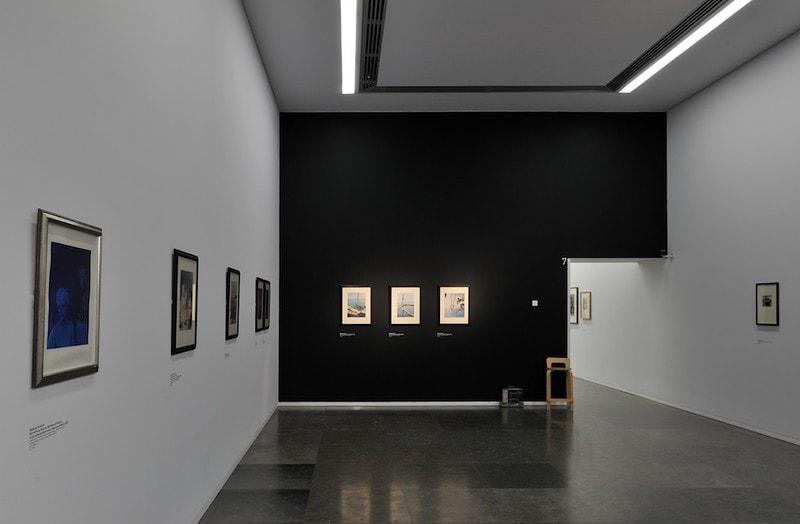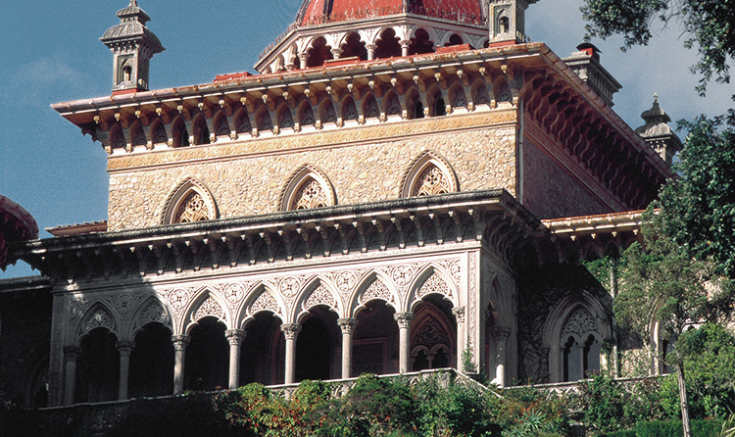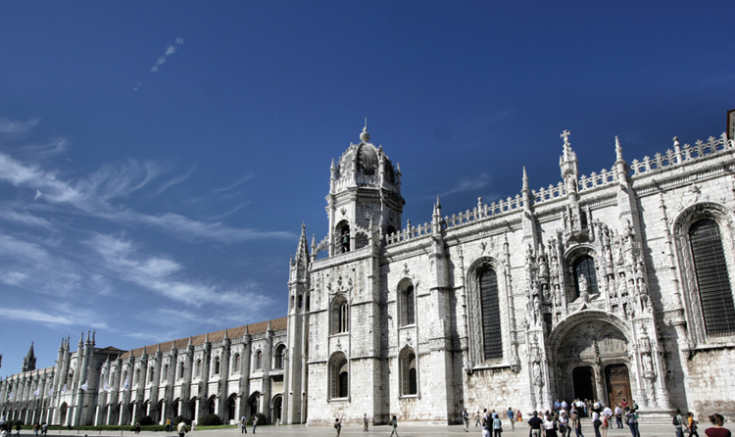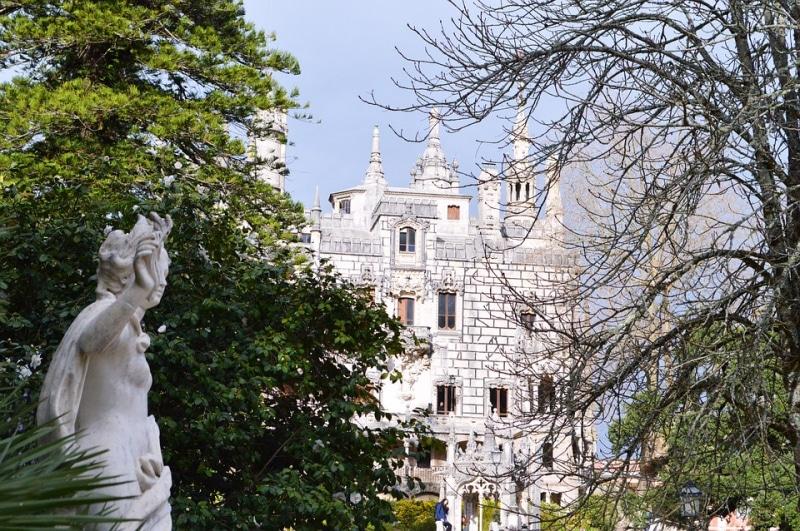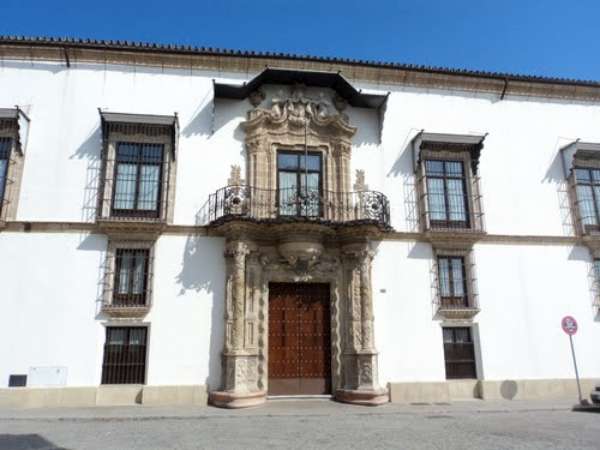Museums, Theaters, Architecture, Tenerife
Removed from Unnamed collection
Historic Center of Arona
The very heart of the town (declared an Asset of Cultural Interest) is represented by the church of San Antonio Abad, from the 18th century, located right in the space that a hermitage occupied a hundred years ago. Inside the temple, the image of the Christ of Health is its most valuable piece. Around, the stately homes and cobbled streets invite a peaceful walk. https://www.webtenerife.com/que-visitar/lugares-historicos/centros-historicos/centro+historico+de+arona.htm
Map
Explore more places related to this search:
Removed from Unnamed collection
Church of San Gines
The city grew around San Ginés, a historic fishing centre established on the shore. Amid its streets steeped in the local seafaring atmosphere is the church of San Ginés. Standing on the site of the first hermitage to be constructed in the capital, it was rebuilt in the 17th century, while its slender belltower dates from the 19th century. http://www.spain.info/en_IN/que-quieres/ciudades-pueblos/otros-destinos/arrecife.html
Map
Removed from Unnamed collection
San Jose Castle International Museum of Contemporary Art
Created at the initiative of architect César Manrique , the Museum of Contemporary Art (MIAC) is located in an old 18th-century fortress called San José Castle. http://www.spain.info/en_IN/que-quieres/arte/museos/lanzarote/museo_internacional_de_arte_contemporaneo_-_castillo_de_san_jose.html
Map
Removed from Unnamed collection
Religious Art Museum
Located in a 16th century palace, the former residence of the Bishops of Funchal, it is one of the oldest and most well preserved museums in Funchal. http://www.visitmadeira.pt/en-gb/what-to-do/culture/pesquisa/religious-art-museum
Map
Removed from Unnamed collection
Cultural de Agadir
Step back from the ocean front and slip into the medina. Lose yourself in alleyways lined with zellige-adorned walls, walk through ornate doors and get acquainted with the craftsmanship of Agadir's artisans. Then head to the Kasbah, which is perched on a rock 775 feet above the ground. http://www.visitmorocco.com/en/culture-agadir
Map
Removed from Unnamed collection
Berber Museum
it is in the workshop of Jacques Majorelle that the Berber Museum was inaugurated in 2011 under the high Patronage of his Majesty king Mohamed Vi. it presents a panorama of the extraordinary creativity of this people, the oldest in North africa. from the rif to the sahara, more than 600 objects collected by Pierre Bergé and Yves saint laurent attest to the richness and diversity of a culture that is still alive.
The museum unfolds in four distinct spaces, articulated around as many themes. The history and geography of the Berbers (amazighs) of Morocco, as well as a cartography of the most significant tribes, are presented: a rich audiovisual documentation accompanies the visitors throughout their visit. https://visitmarrakech.com/discover-marrakech/tourist-attractions/berber-museum
Map
Removed from Unnamed collection
The Koutoubia Mosque
One of the most spectacular monuments in Marrakesh and one of the most beautiful mosques in the western Muslim world. Marked by a complex history, it is actually a double sanctuary with a minaret. The first koutoubia was inaugurated in 1157 and the second one as well as the minaret were built a year later on the initiative of abdelmoumen. The two sanctuaries are distinguished by the T-plan giving great importance to the wall of the qibla (orientation of the prayer). outlined against the landscape, the 77-m ashlar minaret has a ramp which leads to the top, soberly decorated with carvings and white and green tiles on the upper parts of the façade and the pinnacle. https://visitmarrakech.com/discover-marrakech/tourist-attractions/the-koutoubia-mosque-esplanade
Map
Removed from Unnamed collection
The Saadian Tombs
The royal necropolis of the saadian family, a first series of funeral chambers was created after the burial of Prince Mohamed Cheikh in 1557. his son had a koubba erected, known as koubbat lalla Messaouda, where he was himself buried in1574. in 1591, ahmed el Mansour had his mother buried there. his three successors also lie there. a second edifice was raised, with a central room called the room of the twelve columns, it houses the sultan ahmed el Mansour’s grave, the mirhab room, the room with the three alcoves. another space is reserved to children’s graves. all the rooms are exquisitely decorated. https://visitmarrakech.com/discover-marrakech/tourist-attractions/the-saadian-tombs
Map
Removed from Unnamed collection
El Badi Palace
Dar el Badii, the unrivalled palace was built between 1578 and 1603 by Yacoub el Mansour, an almohade ruler. The richest raw materials, some of which came from india were chosen for its construction: gold, onyx, italian marble…The andalusian influence in the plans of the palace is undeniable and one may think that the unknown architect must have come from granada. an almost absolute symetry was imposed in the plan of this magnificent residence completely built on arches with extremely solid bricks. The interior gardens, called gardens of desire, of which only an immense esplanade remains today with artificial lakes and orange trees, are surrounded by the ruins of the palace and high walls on which a multitude of storks is nestled. https://visitmarrakech.com/discover-marrakech/tourist-attractions/el-badii-palace
Map
Removed from Unnamed collection
Jemaa El Fna Square
There is nowhere in Morocco like the Jemaa el Fna Square – no place that so easily involves you and allows you to stay coming back for more. By day, most of the place is just a large open space, where a handful of snakes charming bewitched their cobras with flutes, medical men (especially in the north-east of the square) display cures and Panaceous, and tooth-pullers, wielding fearsome claws, offering to wrest pain from the heads of people suffering from toothache, trays of extracts attesting molars their skills.
It's only in the afternoon that the square really happens. At dusk, as in France and Spain, people go out for a walk early evening (especially in the street Bab Agnaou), and the place fills up little by little until it becomes a carnival all of storytellers, Acrobats, musicians and artists. Go down and you will soon be immersed in the ritual: wandering around, crouching in the midst of spectator circles, giving a dirham or two as your contribution. If you want a break, you can walk to the rooftop terraces, such as the Grand Balcon Café, for a view of the square, its storytellers and musicians, and the crowds that come to see them. https://www.jemaa-el-fna.com/en/
Map
Removed from Unnamed collection
Perfume Museum
This museum promises to make us live a unique experience. form the distillation of floral waters to the extraction of vegetable and essential oils, including the collections of rare objects being of use to the creation of perfumes, those of medicinal and aromatic plants used in the hammam rite, we discover the Moroccan ancestral know-how regarding perfume shop. in addition to its exhibitions, it proposes recreational activities and workshops to understand better this universe so particular. https://visitmarrakech.com/discover-marrakech/tourist-attractions/perfume-museum
Map
Removed from Unnamed collection
Ben Youssef Madrasa
Right in the heart of the medina, the Ben Youssef Medersa, one of the biggest medersas in the Maghreb, is one of the most remarkable historical monuments in Marrakesh and is worth a visit. it was built in the 16th century by the saadian abd allah al ghalib, which is confirmed by the inscriptions on the lintel of the entrance gate and on the capitals of the prayer room. Created on a 1,680-sq.m quadrilateral plan, the medersa used to accommodate 130 students rooms over two floors around an interior patio leading to the prayer room. https://visitmarrakech.com/discover-marrakech/tourist-attractions/ben-youssef-medersa
Map
Removed from Unnamed collection
El Bahia Palace
“Bahia”: literally, the marvellous, the brilliant, this name probably refers to the favourite wife of Ba ahmed, the grand vizier who had the palace built. The plans were designed by the Marrakchi architect si Mohamed el Mekki el Mesfioui, like a real labyrinth reflecting the whims of a powerful man. The best Moroccan and andalousian craftsmen worked on this palace for fourteen years. The tiles were imported from Tetouan, the marble from Meknes while the cedar wood used for the painted and shimmering ceilings came from the atlas. https://visitmarrakech.com/discover-marrakech/tourist-attractions/el-bahia-palace
Map
Removed from Unnamed collection
Hassan II Mosque
The Hassan II Mosque is the second largest mosque in the world and is located in Casablanca, the economic and business capital of Morocco. Michel Pinseau, a French architect, designed the Hassan Mosque and its accompanying minaret. Pinseau designed the building in such a way that it is able to endure earthquakes. At night the minaret has lasers that shine in the direction of Mecca. Today, the minaret is considered the tallest in the world, standing at 689 feet or 210 meters.
The mosque stands on a prominent piece of land that rises up on the shore of the Atlantic and provides visitors with the most spectacular views of the ocean. It was decided by King Hassan II that the mosque should be built on this location because of a verse found in the Qur’an, which says that God’s throne was built over the water. The King wanted worshippers to be able to see God’s creations like the ocean and the sea. http://www.morocco.com/attractions/hassan-mosque/
Map
Removed from Unnamed collection
Casa Port Station
ONCF is the national rail service in Morocco with a total of 669,637 passenger cars serving 1,893 kilometers of track. ONCF provides over 9,767 thousand people with jobs and has thousands of passengers using its services every year. Every two hours there is a train leaving one of the many stations in Morocco providing passengers with reasonably good rail service.
In Casablanca, ONCF has established two rail stations: Casa Voyageurs and Casa Port. These two stations are only five kilometers away from each other. Casa Voyageurs is the bigger of the two stations and provides all the long distance train trips around Morocco as well as in and out of the country. The smaller station, Casa Port, is situated near the port in Casablanca and serves mainly passenger or commuter trains coming from the city of Kenitra to Casablanca. Casa Port Station also serves trains that connect to Casa Voyageurs Station.
Trains leaving Casa Port and Casa Voyageurs Stations provide passengers with a relaxing trip to whatever destination they are going. You get a wonderful opportunity to see the Moroccan landscape in all its varied forms. You will see from dry country landscapes, urban cities, tropical palms and mountainous areas. It really is a treat, so if there is a destination or a friend you want to visit, then head on down to Casa Port Station and buy your tickets. http://www.morocco.com/train-stations/casa-port/
Map
Removed from Unnamed collection
The Kasbah of the Udayas
The Kasbah of the Udayas and its Andalusian garden, the Chellah necropolis, the green belt, the Ibn Sina forest and the test gardens are perfect expressions of this spirit. Plus there is the Rabat zoo, where animals live in faithful recreations of their natural habitats. http://www.visitmorocco.com/en/rabat-green-city
Map
Removed from Unnamed collection
Igreja Velha
The Igreja Velha or old church in Portimão is well known in the city. https://www.travel-in-portugal.com/photos/igreja-velha-portimao.htm
Map
Removed from Unnamed collection
Suspension bridge
Suspension bridge just outside of Portimao which caries the main EN125 road over the River Arade https://www.travel-in-portugal.com/photos/portimao-suspension-bridge.htm
Map
Removed from Unnamed collection
The Capela Dos Ossos
The strangest sight of Faro, which is hidden away from the main tourist route, is the Capela Dos Ossos, the bone chapel. The bones of the overcrowded cemeteries were stored in the small chapel that is located within the Carmo church complex. These bones were incorporated into the designs of the chapel, with skulls lining the walls – very strange and creepy. http://www.algarve-tourist.com/Faro-portugal-guide.html
Map
Removed from Unnamed collection
The Palacio de Estoi
The pink Estoi Palace is the finest example of Rococo architecture found within the Algarve, while the carefully maintained grounds contain beautiful Azulejos tiles. http://www.algarve-tourist.com/Faro-portugal-guide.html
Map
Removed from Unnamed collection
Kasbah Museum
The Museum of Mediterranean Cultures Kasbah Museum is located in one of the historic districts of the city. This museum has seen its interior layout and its rejuvenated collection. It offers a route of Tangier and its region through the mazes of time, from prehistory to the nineteenth century. https://www.visittanger.com/fr/experiences/profitez/tourisme-culturel/musees
Map
Removed from Unnamed collection
The Medina of Tetouan
The Medina of Tetouan has a strong argument, it was declared in 1997 World Heritage by Unesco. It is distinguished by the whiteness of the walls of its houses, color that earned him the nickname of 'White Dove'.
Its medina is a maze of narrow streets and scenes of the most curious, intersecting conversations and charming small crafts shops with a special lifestyle punctuated by an extraordinary historical and cultural heritage. https://www.visittanger.com/fr/experiences/experimentez/tourisme-en-famille/la-medina-de-tetouan
Map
Removed from Unnamed collection
The Old Medina
If this is your first visit, you should take a long walk through the old Medina, it's very entertaining, full of life, and apart from learning history and Tetuan culture, you can buy genuine local crafts. The Tetouan Medina is a UNESCO World Heritage place and it's well worth it! http://www.tetuania.com/en/guide-of-tetouan/things-to-do#
Map
Removed from Unnamed collection
Casa das Historias Paula Rego
Inaugurated in September 2009, the Casa das Histórias Paula Rego is the result of the combined efforts and strong determination shown by both the Cascais Municipal Council and the artist herself, who lived for a long time in Estoril. The museum space was designed by the 2011 Pritzker Award-winning architect Eduardo Souto de Moura, and comprises 750 m2 of exhibition areas, an auditorium, café, terrace, garden and a shop selling original merchandise.
The collection consists of the donation of all of the artist’s engraving work and a set of drawings by Paula Rego almost completely unseen before the museum’s opening, further complemented by the loan, over a ten-year period, of her private collection, which includes paintings and drawings from different periods in her 50-year career as an artist, as well as some works produced by her late husband, Victor Willing, an artist and art critic.
Besides the Collection, which is exhibited on a rotational basis, the Casa das Histórias Paula Rego also organises Temporary Exhibitions and a parallel programme of different events (conferences, talks, films and documentaries), as well as benefiting from an Educational Service with a wide range of activities aimed at different audiences. https://www.visitportugal.com/en/NR/exeres/823AA52F-7A2C-4573-8244-9F04407B6C82
Map
Removed from Unnamed collection
Monserrate Palace and Gardens
Visit the luxurious gardens and greenhouses, bridges, statues, waterfalls and fountains that make Monserrate one of the must-visit places on your stay in Lisbon. https://www.visitlisboa.com/see-do/sightseeing-activities/museums-monuments/monserrate-palace-and-gardens
Map
Removed from Unnamed collection
Mosteiro dos Jeronimos
The Jerónimos Monastery was proclaimed a UNESCO World Heritage Site in 1983. This notable 16th century work of architecture became part of Portuguese identity and culture. https://www.visitlisboa.com/see-do/sightseeing-activities/museums-monuments/mosteiro-dos-jeronimos
Map
Removed from Unnamed collection
The Pena Palace
The exquisite Palacio da Pena is regarded as one of the finest tourist attractions of Portugal and will be a highlight of any visit to Sintra. The vividly painted palace was commissioned in 1842, by King Ferdinand II who championed the arts, literature and music. The king wished the palace to reflect that of a scene from an opera and the extravagant Pena Palace was constructed. http://www.sintra-portugal.com/guides/sintra-things-to-see.html
Map
Removed from Unnamed collection
The Quinta da Regaleira
The Quinta da Regaleira is an extravagant 19th century gothic mansion that is surrounded with some of the most elaborate gardens of Sintra. The gardens are a joy to explore as they are filled with decorative fortifications, mystic religious symbols and a series of secrete passages and caves. http://www.sintra-portugal.com/guides/sintra-things-to-see.html
Map
Removed from Unnamed collection
The National Palace
The gothic styled Palácio Nacional de Sintra is situated in the heart of Sintra and was the most lived in royal residence, being continual used from the 15th century up until the fall of the monarchy in 1910. This is the palace that king Afonso VI (1650s) was imprisoned during his later life, as he was deemed, by his brother, too unstable to rule the country. http://www.sintra-portugal.com/guides/sintra-things-to-see.html
Map
Removed from Unnamed collection
Joaquin Rivero Collection
The Pinacoteca de Bodegas Tradición is made up of a selection of works belonging to the Joaquín Rivero Collection of Spanish painting. As of June 2006, a winery warehouse, after a laborious work of conditioning, will permanently house such important works, so that any visitor can enjoy them.
The Joaquín Rivero Collection is one of the most important exhibited in Andalusia. Its fundamental characteristic is that it brings together more than 300 works of great masters of Spanish painting in a collection of private art, from the 15th to the 19th centuries. In it are represented all the important artistic movements that have been produced throughout the history of Spanish painting, as well as the authors who by their own significance make up the artistic scene of the moment: Zurbarán, Velázquez, Hiepes, Labrador, Valdés Leal, Goya, Maella, Lucas Velázquez, Madrazo, Lucas Villamil, Carlos de Haes and many other authors that will allow our visitors to walk through the history of Spain through his painting. http://www.turismojerez.com/index.php/en/what-to-visit-in-jerez/wine-brandy-3/museums-heritage-centres-and-collections-wine/item/1337-colecci%C3%B3n-joaqu%C3%ADn-rivero?catid=69
Map
Removed from Unnamed collection
Jerez de la Frontera Cathedral
The long period of time over which it was built caused a variety of styles to be integrated into the structure of this cathedral.
It was built as a Collegiate Church, since Jerez did not have a bishopric until 1980. Building began in 1695 and lasted until 1778. Participating architects included Diego Moreno Meléndez, Rodrigo del Pozo, Diego Díaz, Juan de Pina, Torcuato Cayón de la Vega, Juan de Vargas and Pedro Ángel de Albizu. The building has a rectangular plan, with five naves. It is Baroque in style. http://www.spainisculture.com/en/monumentos/cadiz/catedral_de_jerez_de_la_frontera.html
Map
Removed from Unnamed collection
Alcazar of Jerez de la Frontera
The Alcázar de Jerez one of the most emblematic monuments of the city. Located in the southeast corner of the walled enclosure, forming a complex defensive system with the walls, towers and gates.
The term alcazar, comes from Arabic, al-qasr and defines a set of buildings, surrounded by walls, which were the seat of political and military power. Fortress-palace with autonomous operation, a small city, seat of power that governed the city and its territory.
From the original Islamic fortress, the two doors are preserved; the mosque, the Arab baths; the octagonal tower and the Pavilion of the Doña Blanca patio, located at the foot of this tower. http://www.turismojerez.com/index.php/en/what-to-visit-in-jerez/culture-3/museums-and-heritage-centres/item/334-conjunto-monumental-del-alc%C3%A1zar-y-camara-oscura/334-conjunto-monumental-del-alc%C3%A1zar-y-camara-oscura
Map
Removed from Unnamed collection
The Cloisters of Santo Domingo
In 1264 the troops of Alfonso X conquer Jerez definitively to the Muslims. At that time, the monarch gave the Dominicans a military building of Islamic origin located in front of the door of Seville, to found their convent there. The first century of existence of the monastery of Santo Domingo had to be very hard, since the attacks by the Nasrid Kingdom of Granada and its North African allies were constant.
The convent of Santo Domingo remained a united group until 1835, when the different confiscations of the liberal governments of Isabel's reign decreed the exclaustration and seizure of the assets of the convent. Although the church remained open to worship, the cloisters were sold. In the beginning, the owners were Los González, an important family of winemakers from Santander Mountain, who installed here the so-called Museum of Santo Domingo, a kind of trinket in which works of art, furniture and other decorative objects were sold. Then the complex became the property of the Díez family, who installed a cellar in the old bedroom and made a series of somewhat aggressive works with the monument. Los Dietros sold Los Claustros to the Rumasa holding company, which was expropriated in 1983, becoming the property of the City Council, which used it as cultural equipment for years. In 1999 the complex was closed for restoration, reopening its doors in 2012. http://www.turismojerez.com/index.php/en/what-to-visit-in-jerez/culture-3/jerez-monumental-secular-monuments/item/1455-los-claustros-de-santo-domingo?catid=102
Map
Removed from Unnamed collection
Bertemati Palace
Bertemati Palace is located at
Plaza del Arroyo 50 and 51. http://www.turismojerez.com/index.php/en/what-to-visit-in-jerez/culture-3/jerez-monumental-buildings/item/1480-palacio-bertemati?catid=101
Map



